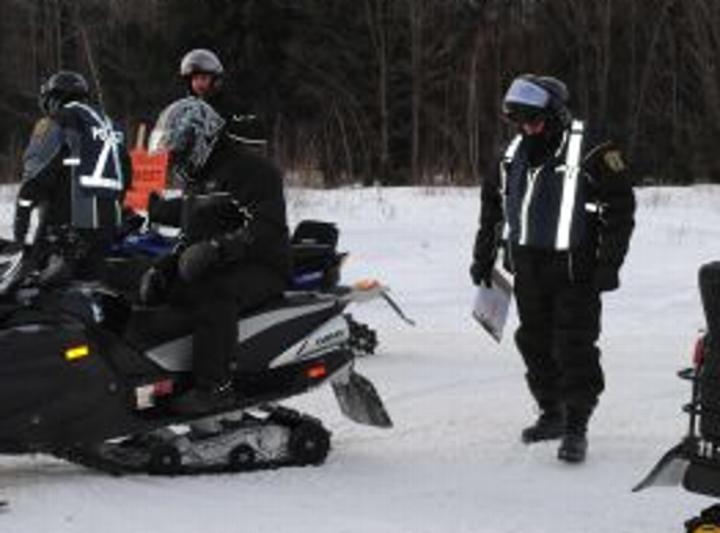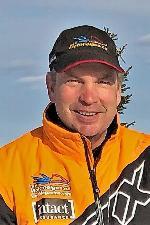Since 1984 several simple riding tips have kept me, my longtime riding buddies and many occasional riding companions, safe for over to 125,000 kilometers of snowmobiling throughout the Belle Province of Quebec.
Many years ago, in preparation for a long distance trip which was to include a newbie*, we wrote down a short list of what over time had become our informal code of expected riding habits and conduct. We shared these tips with our newbie* over a beer the night before our trip would begin.
It was not our intention to dictate policy or compliance, but only to share what habits had become normal for our close group of experienced riders. The list was welcomed in fun and comfortably gave our newbie* a good idea of what the members of the group he was riding with were used to reacting together while on the trail.
The tips proved helpful and another incredible Quebec adventure went safely and without incident. Over many years this list has been shared with others as a way of stimulating thoughts of safety and expected trail conduct. While others may have additional, better or varied opinion on some of our particular list, it has successfully endured the test of time and has remained relevant.
* “newbie” newcomer to an established group.

1. HAND SIGNALS
- Extreme or surprise turns
- Slowing or stopping (obvious hand straight up, very important, people behind may be in snow dust)
- Groomer in the area (straight up, circling around like beacon)
- Wildlife (bounding motion or antler sign)
- Significant hand signals only, no senseless count downs. We prefer that you to have both hands on the bars, stay in control and on your side of the trail.
2. SLOWING OR STOPPING
- Obvious hand signal ALWAYS!
- Pull to extreme right
- No double wide stopping, EVER!
- Visible areas only, think about where you stop, before stopping and how well you can be seen from both directions.
- ·No surprise slowing or stopping to rubber neck, sight see or adjust you gloves
3. STAY TO RIGHT
- Oncoming traffic comes surprisingly fast
- A safety margin of maneuverability is a good idea if oncoming sled is in your lane
- If you intentionally crossover the center, have good sight lines and get back quickly
- If you accidentally crossover get back quickly, it’s good to practice
 As this couple, keep the right track
As this couple, keep the right track
4. MISHAP TIPS
- Never lock up your brakes; you are not going to stop. “When in doubt throttle out” and drive.
- If you go off the trail, look between the trees “not at them”, you generally go where you look.
- If you miss a corner, don’t stop or immediately turn, you may end up wearing the next guy
- If you have an incident in the trail, get out of the way, others are coming
- If you get stuck, don’t have a heart attack trying to get out, take your time, prepare an exit path or wait for help.
- People doing stupid stuff, downed trees, groomers and wildlife, happen, expect the unexpected and be prepared.
- If you avoid an obstacle/accident, get out of the way immediately, next guy also needs a place to go.

5. INTERSECTIONS
- Slow up, if no one is waiting to direct you, always assume the biggest most traveled choice (never take the goat path)
- If there was a rider there for you, make sure the rider after you gets the message as well
- It is not necessary to stop, just makes sure the next guy sees which way you are going
- Lost or confused, just sit there and wait, we have only lost one guy in 20 years, he didn’t wait and took the goat path

Passing slower traffic
6. PASSING SLOWER TRAFFIC
- Let them know you are there by revving engine or putting your light in their mirror
- Use patience and good judgment
- Make pass quickly and where you choose, no blind corners, no hill crests, no gambling
- Get back on your side ASAP, like your life depends on it!
- Some people get aggressive, race you in the straights, won’t stay on the their side, are oblivious to what is going on, are willing to put you in the bush or all of the above. Be patient and prudent!
7. BEING PASSED
- If the rider is there, be real, keep an even speed, give him space, let him in, there is no rescue crew waiting in turn one.
- Don’t get aggressive or speed up in the straights, stay on the right side.
- Never wave another rider by, you cannot retract a bad wave. Never hit your brakes, keep a steady speed and let the faster rider decide when it is safe to make a pass.

Keep a safe distance. Reaction time, visibility, the unexpected
8. DISTANCE
- Reaction time, visibility, the unexpected……….. you choose how fast and how close.
- Every 5-10 miles, make visual contact with the next sled. If you can, slow down or safely pull over, until you see the light coming, blink brake light so they see you and go.
- If the delay is longer than, belt change and whiz stop combined, turn around in a very visible area (use care in turning around outside the trail alone… stuck sucks) and backtrack.
- If the problem is significant , the system will work and sooner than later, everyone in your group will be back

Our columnist, Greg Gilbert encourages you to think safety
I encourage all snowmobilers to think safety, talk about safety and to consider sharing some form of common or expected conduct with their fellow riding partners. Ride smart, Ride safe.


